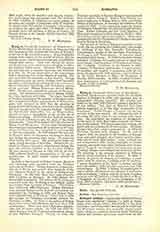

Kiang-si, Vicariate Apostolic of NORTHERN.—Father Matteo Ricci of the Society of Jesus was the first missionary who entered the Province of Kiang-si at the end of the sixteenth century. It was during his voyage from Canton to the capital of China, that he remained some time in this province and preached the Gospel with success. After him, during the seventeenth century, some missionaries belonging to different religious orders came. Innocent XII organized this province into a vicariate Apostolic, and entrusted it to Rev. Fr. Alvares Benavento of the Augustinian Order, appointing him titular Bishop of Ascalon. The new vicar fixed his residence at Kan-chou-fu. During his administration the Jesuit Fathers built beautiful churches, and founded flourishing Christian communities at Yao-chou, Kiu-kiang, and Nan-chang, capital of the province. Bishop Benavento died at Macao, 1705. He was not replaced on account of the persecution. The mission was entrusted to Bishop Ventallot, Vicar Apostolic of Fu-kien. The vicars Apostolic of Fu-kien maintained the mission of Kiang-si under their jurisdiction till the appointment of Bishop Carpena, who obtained in 1838 that the missions of Kiang-si and Che-kiang be removed from his jurisdiction and transferred to the Lazarist Fathers. In 1722 we find Father Entrecolles, S.J., at King-te-chen, whence he sent a magnificent study on the art of Chinese moulding. In 1785 the first Lazarist missionaries arrived at Peking to take the place of the Jesuit missionaries. They were charged with the missions of Kiang-si and Kiang-nan. Unable to go themselves in those missions on account of the persecutions of Yungching and Kien-long, they delegated the native priests to visit the Christians. In 1790 Blessed Clet was sent to Kiang-si where no European missionaries had set foot during the preceding forty years. He remained alone during three years. The persecution broke out again during the reign of Kia-king. Blessed Clet, assisted by Chinese Lazarists, administered during this time the missions confided to the Lazarist Fathers. He was arrested at Ho-nan in 1819, and on February 18, 1820, suffered death by strangulation at the age of seventy-two. In 1832 Father Laribe arrived in Kiang-si.
In 1838, at the request of Bishop Carpena, Kiang-si and Che-kiang were separated from the Vicariate Apostolic of
Fu-kien. Bishop Rameaux, former missionary of Hu-pe, was named vicar Apostolic of the new vicariate formed by the union of Kiang-si and Che-kiang. At this time there were approximately 6000 Catholics in Kiang-si. In 1845 Bishop Rameaux died of apoplexy. The mission of Che-kiang was separated from that of Kiang-si and Bishop Laribe was named Vicar Apostolic of Kiang-si. The mission then numbered 9000 Christians. Bishop Delaplace soon replaced Bishop Laribe, but the new bishop was transferred to Che-kiang in 1854, and Bishop Danicourt replaced him at Kiang-si. From 1856 to 1860 the ravages of Changmau (Tai-ping) reduced the Christians to 6000. In 1470, at the arrival of Bishop Bray, there were 7388 Christians and more than 1059 catechumens. There were then 4 European missionaries and 10 native priests. In 1879 Leo XIII divided Kiang-si into the Vicariates of Southern Kiangsi and Northern Kiang-si. Finally, in 1885, the Vicariate Apostolic of Eastern Kiang-si was separated from Northern Kiang-si. Bishop Paul Ferrant was named coadjutor to Bishop Bray in 1898, and Titular Bishop of Barbalissus; he assumed the direction of the mission in 1905. In the succeeding years the mission of Northern Kiang-si was the scene of bloody persecutions. Father Lacruche and five Little Brothers of Mary were massacred at Nan-chang on February 25, 1906; the mission and the school were burned. Three other missionaries and five Daughters of Charity saved their lives by fleeing to Kiu-kiang.
The mission of Northern Kiang-si comprises today (1910) the six following civil prefectures: Kiu-kiangfu, residence of the vicar Apostolic, Yoei-chou-fu, Nan-chance fu, capital of the province, Nan-kang-fu, Lin-kiang-fu, and Yuan-thou-fu. It contains about ten million inhabitants. In 1899 the Catholic mission included: 2 bishops, 11 Lazarist priests, of whom two were Chinese, 2 native priests, 14 Daughters of Charity, 5071 Catholics. Condition of the mission in 1907: 1 bishop, 16 European missionaries, 4 native priests, 98 churches and chapels, 2 seminaries with 24 students, 50 schools with 1439 scholars, 1 school directed by the Little Brothers of Mary, 24 Daughters of Charity, 8395 Catholics. In 1908: 1 bishop, 18 European missionaries, 4 native priests, 110 churches and chappeels, 11,397 Catholics.
V. H. MONTANAR

